To calculate result you have to disable your ad blocker first.
Algebraic Equations: Definition, Types, applications, and Examples

Publish Date: 08 Aug, 2023
Table of Content
Algebraic equations have a very vast history. Muhammad ibn Musa al-Khwarizmi was a smart person who lived long ago, in the 9th century. He had a great knowledge of math and stars. That’s the reason, he is known as a mathematician and astronomer.
He is also known as the "father of algebra" because he wrote a book called Kitab al-Jabr that helped people solve math problems in a new way. The word "algebra" actually comes from the name of his book.
Definition of the Algebraic Equation
For a better understanding of algebraic equations. Firstly, we have to understand the concept of algebra. Algebra is a way or a technique of representing equations by using symbols and letters.
An algebraic equation can be defined as a statement in which we use variables, constants, and coefficients with different mathematical operations.
Forms of Algebraic Equation
There are several forms of algebraic equations. A few of them are as follows:
- Linear equations
A linear equation is one in which the highest degree of variable is ‘1’
- Quadratic equations
A type of equation in which the highest degree of the variable is ‘2’ is known as a quadratic equation. It is also known as the 2nd-degree equation.
- Cubic equations
The equation in which the highest degree of the variable is ‘3’ is known as a cubic equation.
- Polynomial equations
These are the equations in which a variable has one or more exponents.
- Radical equations
The equation in which variables come inside the square root.
- Rational equations
The equations in which variables appear as the denominator is known as rational equation.
- Exponential equations
The equation in which variables appear as an exponent is known as the exponential equation.
To solve an equation, it is important to follow the rules and procedures that apply to that specific type of equation. Different types of equations may require different methods to solve, and it is important to choose the appropriate method for each equation to get an accurate solution.
Representation of Equations with their Graphs
Linear equation
Mathematically,
ax + b = 0
Here,
- ‘a’ is a coefficient of ‘x’ which would always an integer value
- ‘b’ is a constant
- ‘x’ is a variable
linear equation graphical representation
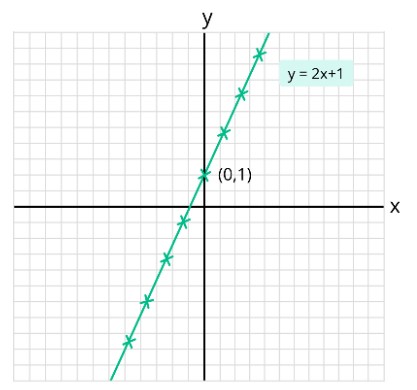
Quadratic equation
Mathematically,
ax^2 + bx +c =0
Here,
- ‘a’ is a coefficient of ‘x^2’ which would always be an integer value
- ‘b’ is a coefficient of ‘x’ which would always be an integer value
- ‘c’ is a constant
- ‘x’ is a variable used in this equation
Graphical representation of quadratic equation
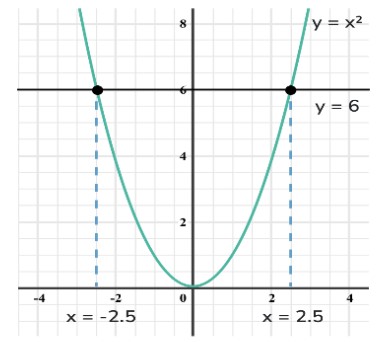
Cubic equation
Mathematically,
ax^3 + bx^2 + cx + d =0
Here,
- ‘a’ is a coefficient of ‘x^3’ which would always be an integer value
- ‘b’ is a coefficient of ‘x^2’ which would always be an integer value
- ‘c’ is a coefficient of ‘x’ which would always be an integer value
- ‘d’ is a constant
- ‘x’ is a variable used in this equation
Graphical representation of Cubic equation

Polynomial equation:
Mathematically,
ax^4 + bx^2 -1 = 0
Here,
- ‘a’ is a coefficient of ‘x^4’ which would always be an integer value
- ‘b’ is a coefficient of ‘x^2’ which would always be an integer value
- ‘-1’ is a constant
Graphical representation of polynomial equation

Radical equation
Mathematically,
Sqrt(x+2) + 3 = 5
Here,
- ‘x’ is a variable used in this equation
Graphical representation of radical equation
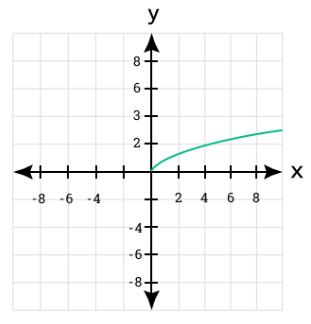
Rational equation
Mathematically,
(ax + b) / (cx + d) = 1
Here,
- (ax + b) represents the nominator’s equation
- (cx + d) represents the denominator equation
- ‘x’ is a variable used in this equation
Graphical representation of rational equation
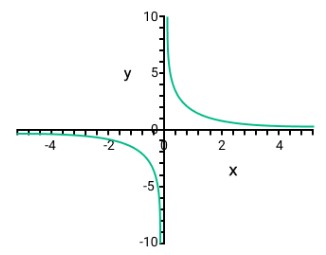
Exponential equation
The equation in which variables appear as an exponent is known as the exponential equation.
Mathematically,
a^x + b = 0
Here,
- ‘x’ is a variable used in this equation as a power of ‘a’
- ‘b’ is a constant
Graphical representation of exponential equation
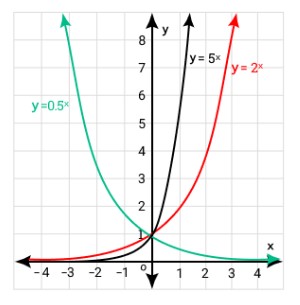
Applications of an algebraic equation
Some applications are as follows:
- Solving for unknown values
- Modeling real-world phenomena
- Analyzing data
- Optimizing solution
- Designing experiments
Examples
Examples of algebraic equations are as follows:
Example 1:
Find the value of the ‘x’ if (2x + 4) = 0.
Solution:
Step 1: write the equation
2x + 4 = 0
Step 2: subtract the ‘4’ on both sides of the equation
2x + 4 – 4 = 0 – 4
2x = - 4
Step 3: Using the property of algebra
x = -4 / 2
x = -2
Example 2:
Find the value of “x” when (x^2 + 7x + 10) = 0.
Solution:
Step 1: Write the equation
x^2 + 7x + 10 = 0
Step 2: Make polynomial factors of the given equation
x^2 + 5x + 2x + 10 = 0
x (x + 5) + 2 (x + 5) = 0
(x + 2) * (x + 5) = 0
Step 3: Find the value of “x” by using the algebraic properties
x = -2, -5
Summary
This article explains algebraic equations, including their concepts, rules, formulas, and applications. It also uses practical examples and scenarios to help you understand the concept of algebraic equations and apply them easily.

